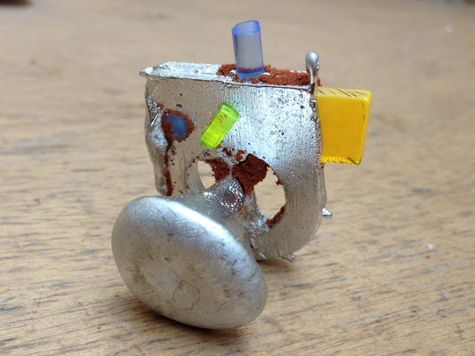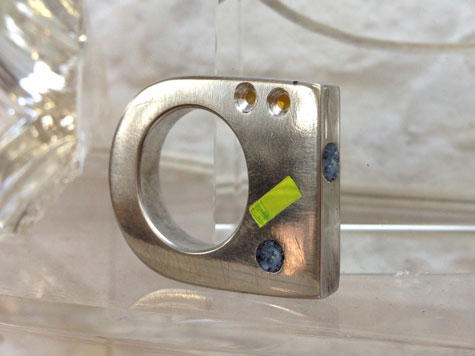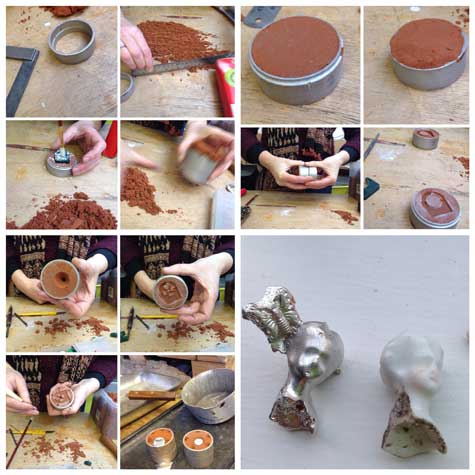Week 1 – Introducing Delft clay – a versatile casting technique for jewellery in the home studio
Having introduced in our first week a broad overview of the principles and processes involved in casting, this week the Tuesday students got to grips with the jewellery casting technique of Delft Casting.

delft cast pewter ring straight from the mould
These sample rings, made in pewter and with acrylic inclusions, show how you can achieve quite diverse aesthetic results from the process, depending on the final treatment of you cast ring.

Delft cast ring with acrylic inclusions
This ring has been filed and polished to give a smooth and shiny surface; the transition from translucent colour to reflective metal invites you to stroke!

Delft cast pewter ring with raw finish
The part-polished but raw appearance of this ring gives it a brutal and curious appearance. This rough style is further enhanced by a cut made with a graver, revealing more light and colour from the perspex beneath the surface.
We also discussed how the delft casting process lends itself well to multiple layers of objects being used to create more intriguing stories.
Stars go to Jessamy this week for documenting the process with her camera 🙂
(See her interesting first experience of casting in the bottom right of this photo)

